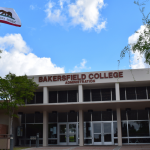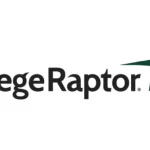Higher education professionals know that student success extends beyond academics. That’s where Student Affairs (or Student Services, depending on the institution) comes in. With a focus on holistic student development, Student Affairs sets the foundation for a well-rounded college experience. Through activities, events, and counseling, students gain skills in leadership, communication, and decision making, to name a few.
Studies show that students who participate in Student Affairs activities have higher retention rates and are more likely to graduate within four years, so the importance of Student Affairs and the positive impact it has on our students can not be understated. However, Student Affairs teams (and higher education in general) have not been immune to the Great Resignation, employee turnover, and reduction in resources that many professions are facing.
So, how can Student Affairs keep up and maintain effectiveness with limited resources? We’ll share a few pointers on how to maximize team efforts — just keep reading!
Three Ways to Maximize Student Affairs’ Affectiveness
Strategy 1: Automize FAQs to Increase Efficiency
We’ve already established that Student Affairs teams play a crucial role in supporting and enhancing the student experience. But their day-to-day can easily get bogged down with simple questions like “how do I submit a dorm maintenance request?” or “what on-campus events are going on this week?” But guess what? Chatbots can be their secret weapon in offloading these requests to become even more effective.
By harnessing the power of artificial intelligence, chatbots can provide immediate and personalized assistance to students, freeing up valuable time and resources for the student affairs team. These virtual assistants can handle routine inquiries, such as answering frequently asked questions about campus resources, events, and policies, allowing staff members to focus on more complex and meaningful interactions. Plus, chatbots are available 24/7, ensuring that students can access the information they need anytime, anywhere. By leveraging this technology, student affairs teams can improve efficiency, enhance student engagement, and ultimately create a more robust support system for students.
Strategy 2: Send Out Proactive, Targeted Communications
In today’s fast-paced digital era, effective and proactive communication is paramount in higher education. Student Affairs professionals are constantly looking for innovative ways to connect and engage with students on a personal level. Enter Two-Way Texting, an AI-powered solution that not only streamlines communication but is another way Student Affairs professionals can get ahead of student questions and make the most of their time.
With Two-Way Texting, student affairs teams can proactively communicate with students through a medium they are familiar and comfortable with: text messaging. Instead of relying on traditional methods like emails or phone calls, which may go unnoticed or unanswered, texting provides a convenient and immediate way to reach students. This ensures that important information, such as upcoming events, deadlines, or campus updates, is delivered promptly and effectively.
Beyond just delivering information, Two-Way Texting fosters engagement and builds relationships with students. Students can respond to messages, ask questions, or voice their concerns, enabling a back-and-forth dialogue. This interactive approach creates a sense of connection and support, making students feel valued and heard. As a result, they are more likely to actively participate in campus activities and seek assistance when needed.
The impact of using text messaging in higher education goes beyond convenience and engagement. Studies have shown that leveraging Two-Way Texting can significantly increase student retention rates. According to Campus Explorer, implementing text messaging services resulted in a 20% increase in student retention. By proactively communicating with students, addressing their concerns, and providing timely support, student affairs teams can play a vital role in student success and overall satisfaction.
Strategy 3: Make It Easier for Students to Access Your Staff
We’ve already hinted at this in the previous two strategies, but all Student Affairs’ efforts may be for not if students aren’t able to find resources easily and via the channels they prefer. Today’s students are constantly online and prefer self-serve channels for the majority of their straightforward interactions.
According to a survey conducted by Salesforce, 75% of students indicated that they wanted institutions to communicate with them through their preferred channels (websites, mobile apps, or social media). As we mentioned before, Two-Way Texting and Chatbot are great ways to meet students where they are, but Live Chat can also be a useful solution to bring expertise and care directly to students.
Picture this: A student has a question about on-campus housing, but has a complicated class and work schedule. Instead of playing phone tag, they can simply access your institution’s website or mobile app and start a live chat conversation. Ocelot’s Live Chat solution connects engaged students with complex questions to a live agent, allows Student Affairs staff to interact with students via chat or screenshare for personalized advising and support, and leverages AI for suggested answers and resources during live conversations.
In addition to adopting AI-powered communications solutions, you also need to let students know that these tools are available for them in creative ways. An example is to have a QR code outside the entrance (on the door or somewhere visible) to the Student Affairs office, linking to the website that hosts your Chatbot. The note next to the QR code can read, “Questions after hours? No problem! Check out our Chatbot here to get the answers!” This makes students aware of additional resources exactly when they need them.
Make the Most of Your Time
For Student Affairs employees, AI is a game-changer. You might be thinking, “Is this going to replace human interaction?” Not at all! AI designed for Higher Education is intended to augment human interaction, not replace it. In fact, it allows your team to focus on more meaningful and complex interactions. By automating routine inquiries and providing instant responses to FAQs, you can free up time and resources to address more in-depth issues and provide personalized guidance to students.
It improves convenience for students, allows for a personal touch, boosts engagement and retention rates, and promotes a sense of belonging. With the potential for continuous improvement and collaboration, the future for AI and Student Affairs is bright and promising. Embrace AI-powered solutions like Ocelot’s and let’s create a more connected and supported student experience together. Talk to our team today!















